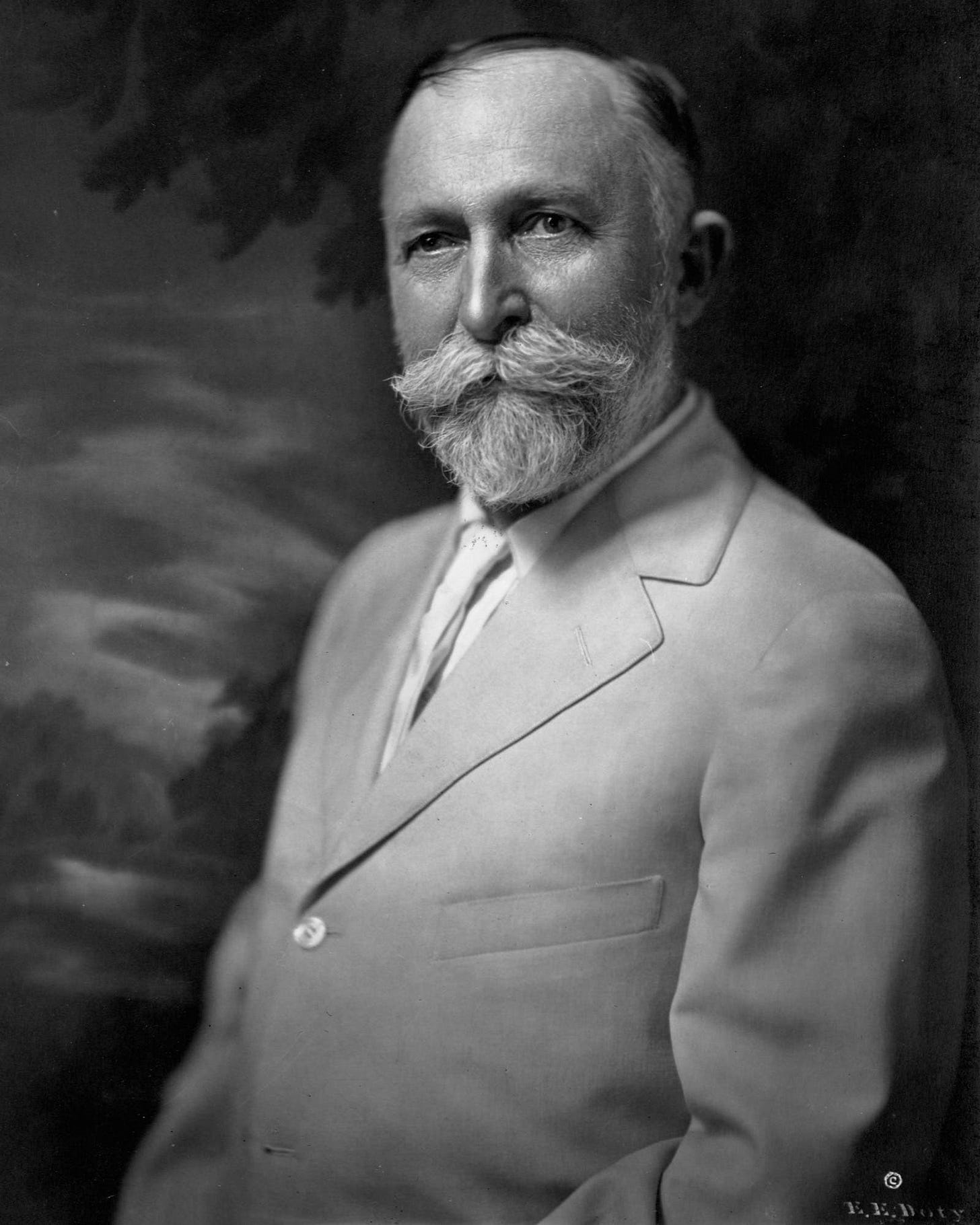Pass the Cornflakes: John Harvey Kellogg's Battle Creek Sanitarium
You'll never guess who went or what he required four times a day
Guests who frequented the same spa: John D. Rockefeller Jr. Thomas Edison. Henry Ford. Amelia Earhart. Warren G. Harding. Booker T. Washington. Sojourner Truth. Ida Tarbell. Mary Todd Lincoln.
Holy banana pants. Some of these treatments look uncomfortable.
In the late 1800s through the early 1920s, they all visited the sanitarium at Battle Creek Michigan. Its founder, John Harvey Kellogg, MD, the very same of Cornflake fame, had created the hottest health and wellness destination. His aim was to heal patients inside and out, with a combination of medicine, vegetarianism, water therapy, exercise, and spirituality.
He called it "biologic living," and people flocked to take his treatment, to detox from stressful lives, and experience a little pampering.
Word has it he often dressed in white and let a white cockatoo perch on his shoulder. The epitome of sanitary.
His ideas flourished from his faith; he was a Seventh Day Adventist, who preached dietary and sexual abstinence.
John Harvey Kellogg, MD
The longest menu of health treatments
Some would call him a bit unorthodox, but no one could say he wasn’t thorough. A few of his prescriptions and offerings, according to Greg Daugherty for history.com:
chew each bite of food 40 times, to help with digestions
take light therapy for for diabetes, insomnia, gangrene, and writer's cramp
undergo electrical stimulation, directly on the eyeballs, to cure vision ailments
take weeks long baths (with bathroom breaks) for hysteria
use vibrating wooden chairs to stimulate the bowels
take exercise classes to the tune of marching bands
receive four enemas a day (you read that right. FOUR)
People took these treatments, in particular the enemas, in a kind of shiny medical opulence, according to medical historian and PBS columnist Dr. Howard Markel:
"Down the hall from the bathrooms was Kellogg’s sanctum sanctorum, the enema room, stuffed with gleaming “enema machines” that could pointedly deliver 15 quarts of water per minute into a human colon. Kellogg ordered his patients to produce 4 or more bowel movements a day, just like the healthy apes he had once observed while on a safari in Africa. The son of a broom manufacturer, Kellogg was obsessed with bodily cleanliness, both external and internal. If the water enemas were not enough, he ordered his patients to consume a pint of yogurt each day, followed by a yogurt enema.”
Holy mackerel.
Entertainment was also on the menu
The sanitarium offered more than wellness treatments. Kellogg made sure there was plenty of entertainment, including a ballroom for dances, a theater for lectures and morality plays, well-manicured lawns for games, and a fleet of bicycles for riding the surrounding nature trails.
Would you give it a try?
Honestly, I could do without the enemas, but I would totally go. Baths? Healthy food? Personalized treatments? Luxurious ballroom and entertainment? Famous fellow guests? Hell yes.
Some of his ideas may seem banana pants, but his philosophies are not so far out today. Vegetarianism, clean eating, exercise, attention to digestion - all of these have evolved into well-accepted principles of healthy living.
What happened to the Sanitarium
Sadly, you can't check into the sanitarium today. Originally built in 1866, it closed during the Great Depression. The U.S. Army acquired the property during World War II, when it became the Percy Jones Hospital. Today it's a government building, presumably minus the enema rooms.
Life at Battle Creek, in photos
Check out this great collection of photographs - everything from a menu to massage treatments to surgical procedures at Battle Creek - thanks to the library at the University of Michigan.
Extra credit: Watch the 1994 movie, The Road to Wellville, which parodies Kellogg’s sanitarium.





